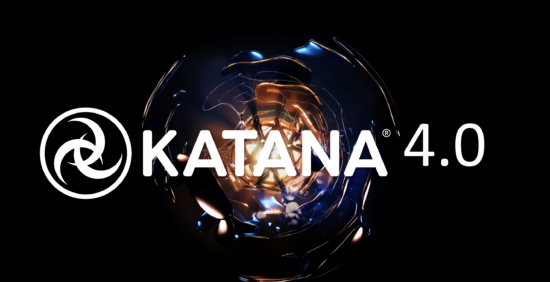The upcoming version puts powerful lighting tools right where artists want them.
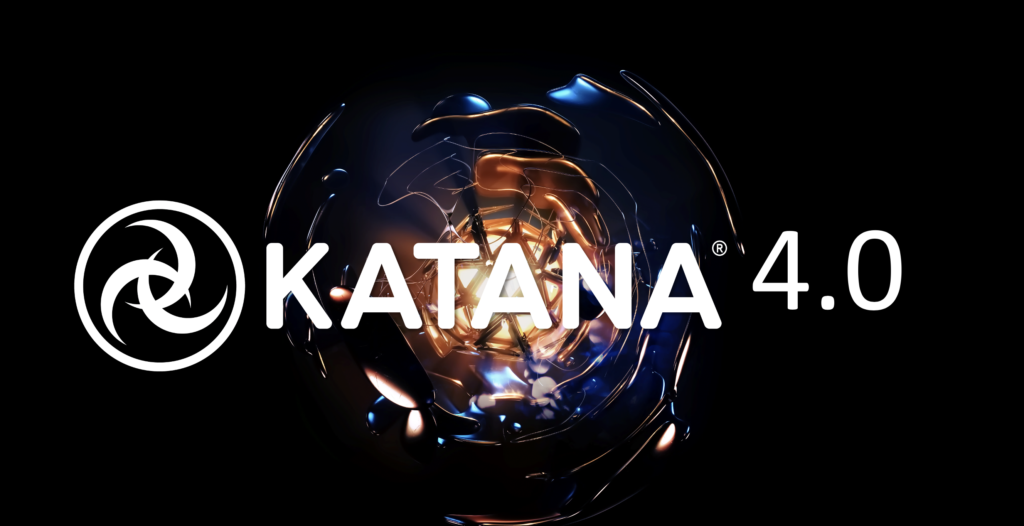
The Foundry’s Katana is a powerful tool for lighting and look development. Compared to so many tools used in entertainment content creation, it is a relatively young application. Foundry added Katana to its portfolio in 2011 through a deal with Sony Imageworks to package and further develop the tool the Sony team developed to handle lighting and look development.
Katana has a bit of a reputation as a complex tool TDs for big studios but, through its ongoing development, Foundry has been adding features that users expect from commercial tools and also keep up with technology advances, including optimizations based on modern processors and industry-driven software improvements.
Katana was developed to enable artists to work quickly and deal with huge amounts of data. It is fast because it uses deferred evaluation, meaning that as scenes are defined, the actual processing to create it only happens when necessary. Katana evolved in response to the huge amounts of scene data that were being created as digital cinematography becomes ever more capable. As a result, scenes were becoming unwieldy to work with and to even load.
Foundry is committed to the open-source USD (universal scene description) schema originally developed by Pixar and released as open-source in 2016. As more and more software tools commit to USD, it means they all have a common language for describing data. Katana 4.0 takes advantage of the Hydra viewport, which was developed along with USD to visualize data.
Tools that support USD can read and write content from all the other tools that read and write USD, making it the lingua franca of content creation. USD is an evolving tool, with more work needed, but 2020 marks the year software developers are becoming confident of its ability to knit together the complex workflows of content creation using a variety of tools by different companies.
Nathan Rusch, a senior developer at Luma Pictures, says in a Foundry video tutorial that their work on Dr. Strange represented a high watermark for the company in a good way and a bad way. They were proud of the work they did, but they said the enormous files created came close to breaking their pipeline and something had to change. USD to the rescue. Among other features, USD’s layer structure improves data handling for applications and lets artists build variations that can be turned on and off when needed. Rusch says a defining characteristic of Katana is that it is used to create a recipe for building a 3D scene not for actually building the scene itself. That recipe can then be used, reused, modified, and shared across sequences and shots. And finally, he highlights Katana’s deferred evaluation capability. All these features play a big role in Katana 4.0.
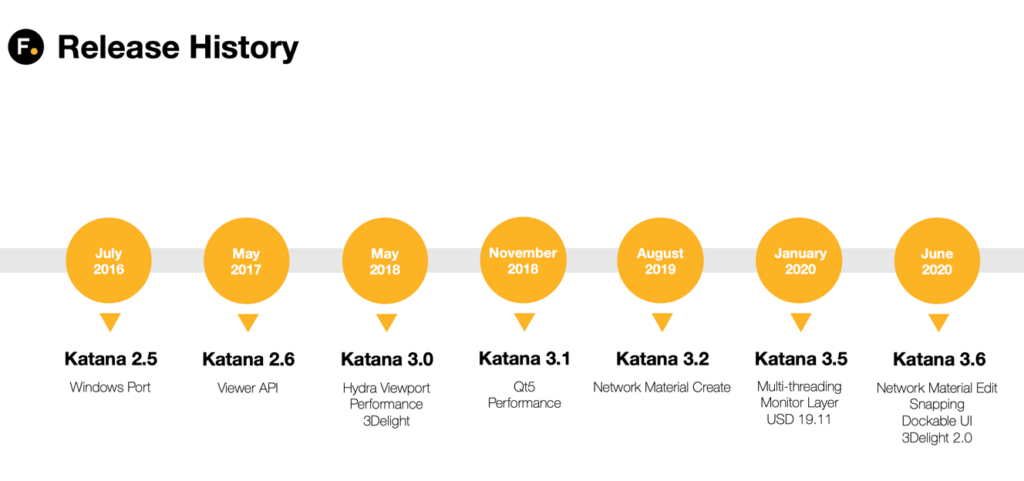
Foundry has been providing sneak peeks to its upcoming Katana 4.0, which will arrive in the Fall. In these previews, the company has focused on several key improvements, a new interface with new lighting tools, multiple simultaneous renders, and scalable interactive network rendering.
Interface improvements

Katana’s new viewport gives artists an intuitive interface for placing, moving, directing, and editing lights that’s like working with practical lights on a set but even more powerful. Lights can be placed with one click and adjusted with context-aware controls in the scene. Basically, it’s an onscreen spreadsheet allowing interactive adjustments and immediate results. Lighters can direct a light by touching the place on the geometry where they want the light to go and Katana can place the light accordingly. Lights can be cloned and adjusted within the context of the scene and each other. A fill light can be added using the camera’s position. Shadows, likewise, can be directed by indicating where the shadow is supposed to fall and Katana works backwards to place the light where it needs to be.
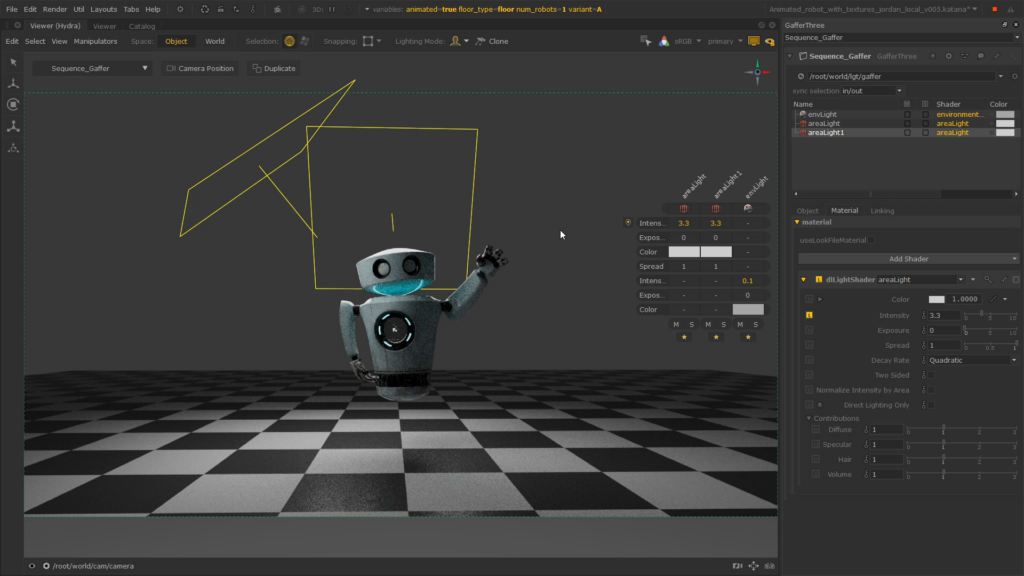
Multiple simultaneous renders
Jordan Thistlewood, Foundry’s director of product, demonstrated the upcoming Katana release on his workstation laptop with 8 cores. It easily handles all the interactive lighting tasks thrown at it. Next up, Thistlewood demonstrated multiple simultaneous renders and the real power of Katana became evident. Just as the name suggests, Katana allows multiple renders to be spawned so that artists can evaluate the look they’re getting. He was using single frames and simple models, but the power of the capability was obvious.
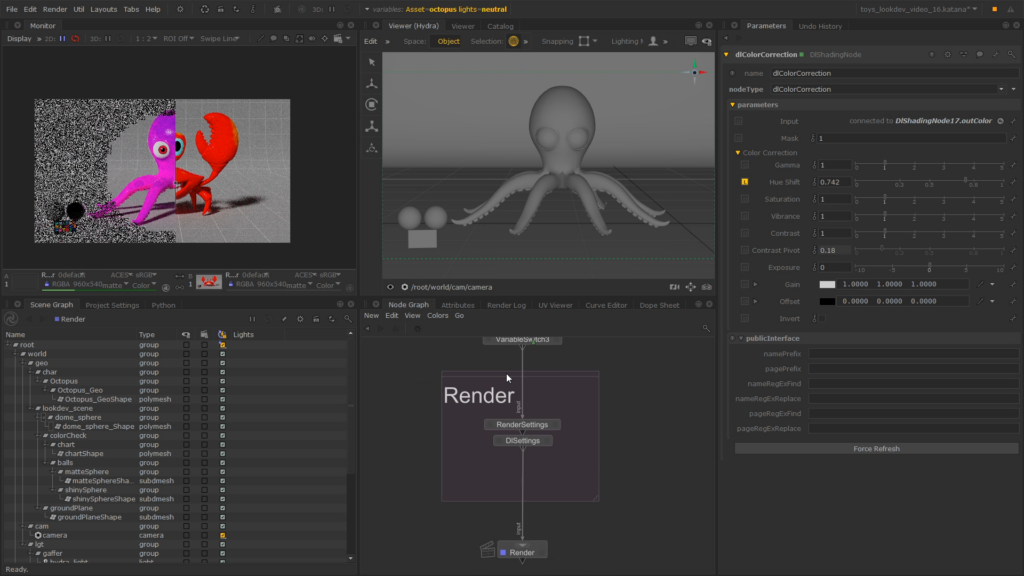
An artist can start a render, make adjustments, compare it to other models in the scene, and that artist can run as many renders at the same time as the computer allows. Thistlewood said that the Foundry had been talking to studios who have invested in new computers with multicore CPUs. They love the rendering speeds they’re getting and Katana is massively multi-threaded and so can take advantage of all those cores, but there are times when cores are sitting idle as artists perform a variety of tasks. It’s a lot of stop and start work. The ability to run more renders for short bursts of time enable artists to do more and take better advantage of all 64 cores in an AMD Threadripper processor or the upcoming 28 cores in Intel’s Ice Lake.
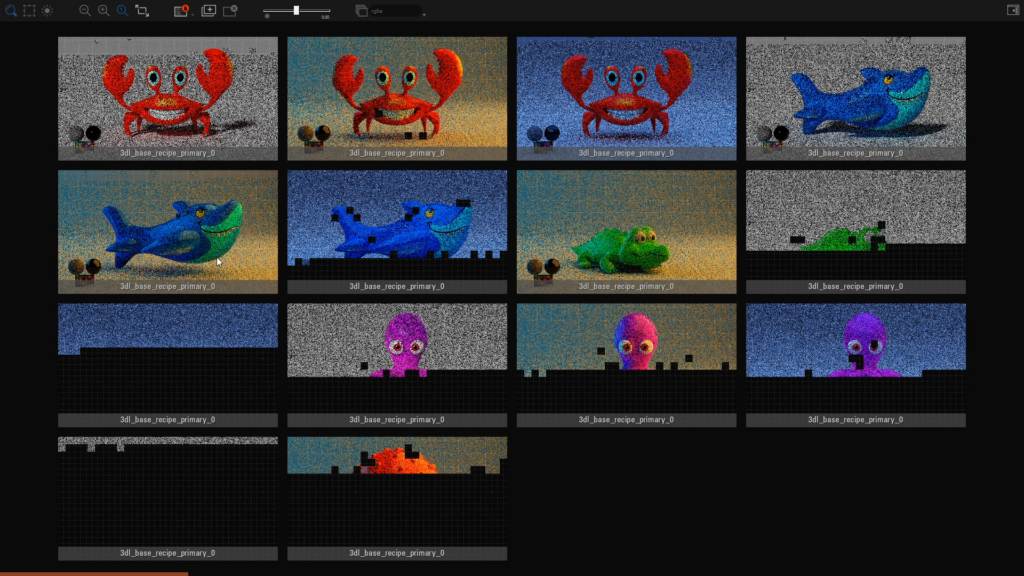
In addition to being able to adjust the colors, artists can also use all the flexibility of placing lights, cloning them, adjusting lights scenes interactively and kick off new renders, to see what works and how it works. It gives artists much more power when one person can do what it may have required several people to do.
Foundry plans to ship Katana 4.0 with presets that will enable users to create trial renders with a specific set of alternatives, and customize them for what they’re trying to do.
Scalable Interactive Network Rendering
An artist can try out multiple lighting, looks, colors, etc., on a scene on a computer using simultaneous renders, but that person can also take it up to the network and enlist even more processors and take advantage of the render farms and rendering front ends like Thinkbox Deadline, Pipeline FX Qube!, OpenCue applications, etc. Then the possibilities start to multiply.
Thistlewood points out that it can be a lot cheaper and more efficient to buy a few more render licenses to give an artist the ability to create and compare more renders than it is to hire additional artists. Or, maybe hire more artists who can significantly increase the studios’ output.
Foundry will also ship templates for using the simultaneous multiple rendering features on the network.
There is more to come, but these were the high points the company focused on during their Foundry Live series of webinars and tutorials. For instance, one feature they’re hoping to add soon is interactive ray tracing.
The company’s focus on USD has the potential to change workflows for their customers using their products, including Nuke and Modo. One of the effects of digitalization is that pipelines have gotten much less linear and hierarchical. That trend is getting an even bigger boost with the connectivity enabled by USD.

